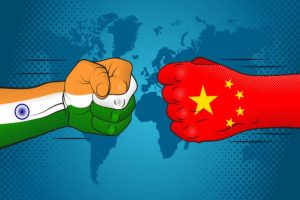India has set itself a bold target of $100 billion of exports in textiles and apparel by 2030. This is the right move. With one of the most labour-intensive products – apparel – accounting for 50-60 per cent of this total, this target will help immensely in overcoming our greatest challenge – better jobs for 20 crore farm labour, women who want to be in the labour force, and unemployed youth. Unfortunately, our track record suggests that this will prove to be a challenging task.
India’s apparel exports remain range bound at $16- 19 billion from 2015 to 2022 even as Vietnam increased its exports by 70 per cent ($20 billion to $35 billion) and Bangladesh nearly doubled its exports ($26 billion to $47 billion) during this period. The Union Government recognises the need for change. It has decided to back its “vision” with some fiscal “action” as it launched the much-awaited Employment Linked Incentive scheme in the Budget for 2024-25. The scheme provides incentives to employees for taking up formal sector jobs even as it incentivises employers to create capacities in labour intensive sectors (including but not limited to garment manufacturing).
Advertisement
This is a step in the right direction and will help bridge the gap with Bangladesh and Vietnam. However, to really understand this gap, we must look at the pure cost disability of an Indian garment manufacturer vis-a-vis the two countries. Let’s take the example of a 1,000 machine garment unit – large by Indian standards but quite small by international standards. It employs 2,000 people and manufactures 60 lakh polyester T-shirts per annum at a unit cost of Rs 238 per t-Shirt. This is more than what it would cost to make in Bangladesh or Vietnam by roughly Rs 24, or 10 per cent.
The net profit margin for such a product is typically Rs 10-11. Hence, at the factory gate itself, an Indian garment manufacturer faces a cost disadvantage rendering it uncompetitive without even accounting for preferential market access that Bangladesh and Vietnam enjoy in some markets such as the European Union (EU). This cost disability is largely driven by two factors. Firstly, India levies high import duty on fabrics, especially synthetic fabrics (20 per cent in India compared to 12 per cent in Vietnam). Local fabric also sells at the landed price of imported fabric leading to higher raw material cost for the Indian garment manufacturer.
Additionally, cumbersome trade and Customs’ procedures coupled with Quality Control Orders (QCOs) on import of Man Made Fibre (MMF) inputs have ensured that the cost of domestically produced MMF fabric is at least 20 per cent higher than international prices. Given that finished fabric accounts for 50 per cent of garment cost, the sub-optimal duty structure creates an unnecessary yet significant cost disability for the Indian exporter. While the Indian Government tries to offset this disadvantage through Duty Drawback and Refund of State and Central Taxes and Levies (RoSCTL) Scheme, it would be much simpler to just rationalize the duty on fabrics. If the intent is to strengthen the synthetic textile ecosystem in India (the infant industry protection argument), there is ample evidence across economic literature to show that such protection simply perpetuates the local industry to remain subscale and inefficient.
Targeted incentives to help scale up the local MMF textile ecosystem will yield much better results than distorting prices in the value chain. Secondly, India’s minimum wage at $0.7/hr (compared to $0.5/hr in Bangladesh and $0.8/hr in Vietnam) is amplified by overtime rates at 2x the regular wage rate (Bangladesh and Vietnam overtime rates are 1.5x), stringent ceiling on overtime hours/week and lower worker productivity due to efficiency and quality disadvantages driven by lack of manufacturing scale (India’s largest garment factories employ 2,000-3,000 workers compared to 10,000-20,000 workers in Bangladeshi and Vietnamese factories).
After accounting for the regulatory burden and scale-based inefficiencies, and incorporating statutory contributions, India’s effective wage rate jumps to $1.4/hr and compares unfavourably with Bangladesh ($0.6/hr) and Vietnam ($1.1/hr). For an industry where labour accounts for 25-30 per cent of total cost, this ensures that Indian garment exports remain uncompetitive. This brings us back to the Employment Linked Incentive. While the incentive to the employer (up to Rs 3000/man-month for two years under and part reimbursement of employer Employees’ Provident Fund Organisation (EPFO) contributions for four years for first time employees), will address India’s labour cost disability to an extent.
But it must be noted that these are temporary fixes, come at a substantial cost, and most importantly, do not address the structural and completely self-imposed reasons for the disability in the first place viz. high barriers on raw material import coupled with high regulatory burden on hiring labour in India. Until we address these, India’s sub-optimal performance in garment exports, an area where India has a right to win on account of its factor endowments, will continue unabated and the Vision of $100 billion exports by 2030 will remain a distant dream.
(The writers are, respectively, Programme Associate and Associate Partner at the Foundation for Economic Development.)











